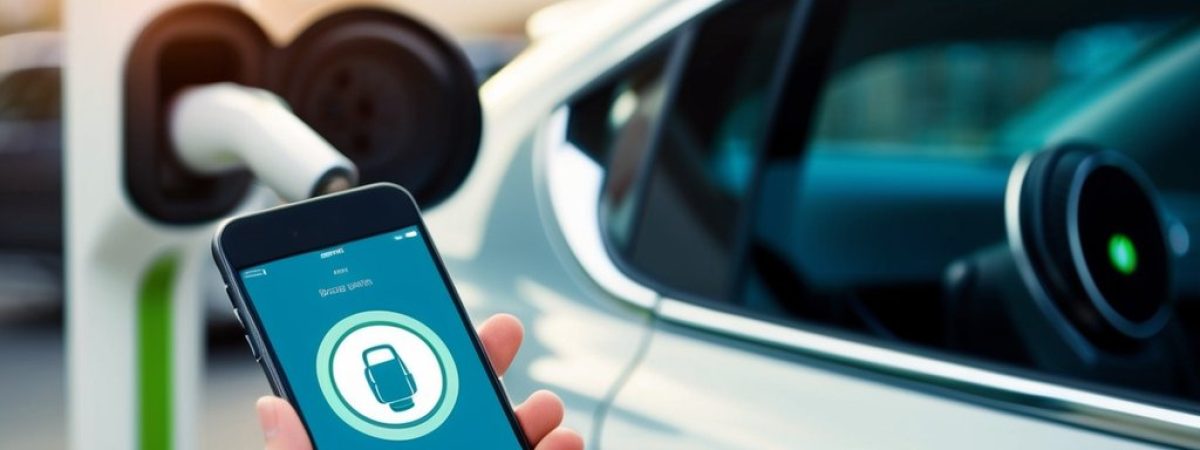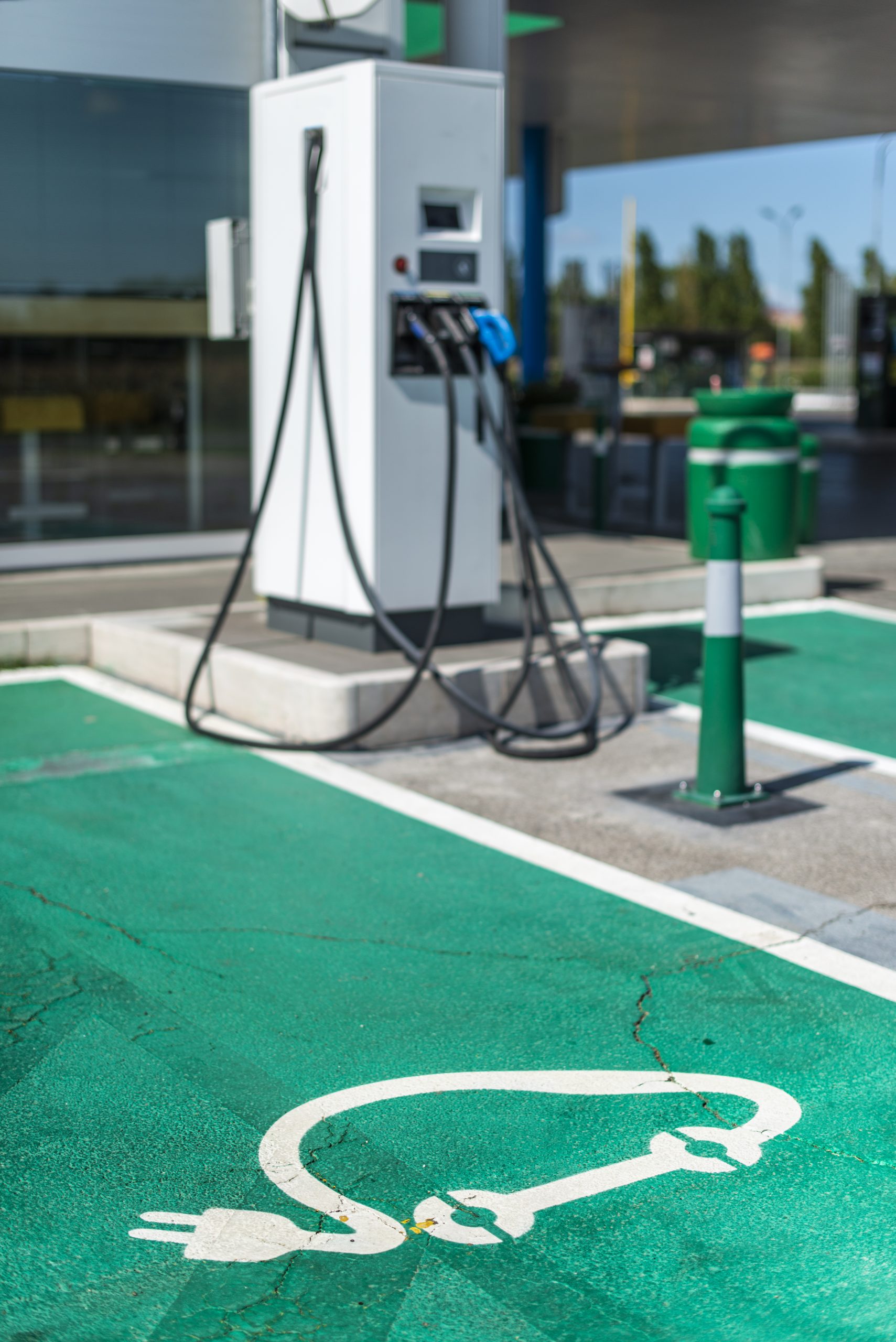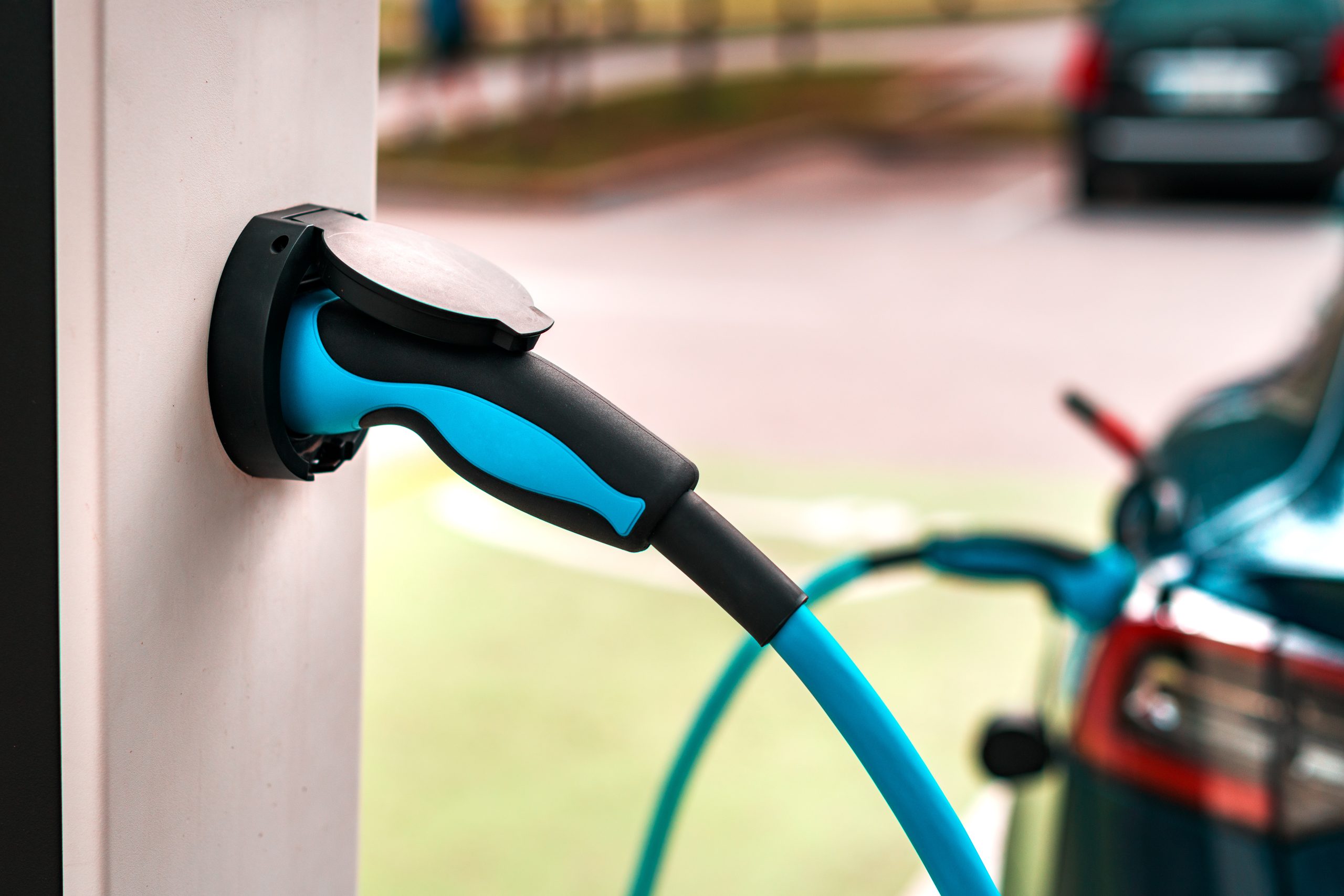Understanding EV Charging
Electric vehicles have changed how we think about transportation. Charging these vehicles is an essential part of the experience. There are different ways to charge an electric vehicle, depending on where you are and what you need.
Types of Charging:
Home EV Charging: Many people choose to install a home charging station for convenience. This typically uses a Level 2 charger, which can fully charge a car overnight. It’s a practical solution, especially for those with a garage or driveway.
Public Chargers: These are found in various places, such as shopping centres, car parks, and motorways. Public chargers are part of broader EV charging networks. They offer different charging speeds, from slow Level 2 chargers to fast DC chargers, making it easy to find a suitable charge point.
Joining a charging network can provide easy access to a range of public chargers. These networks often have apps to locate chargers, check availability, and start charging sessions. Some popular networks include Zapmap and others.
EV charging networks play a critical role in making driving an electric vehicle easier. They ensure drivers have access to charging stations when needed, supporting the continued growth of electric mobility.
Types of EV Charging Stations
Understanding the different types of EV charging stations is crucial for electric vehicle owners. These include public charging stations, home EV chargers, and fast charging infrastructure. Each type serves unique needs based on speed, convenience, and accessibility.
Public Charging Stations
Public charging stations are available in various public locations like shopping centres, parking garages, and motorways. These stations often provide Level 2 charging, using a 240-volt AC setup to charge most vehicles within a few hours. Level 2 charging is suitable for drivers who plan to park for longer periods, such as while they work or shop.
Many public charging stations also offer Level 3 DC fast charging, reducing charging time significantly. These stations use a higher voltage to provide quick recharges, making them ideal for longer journeys. They are especially useful on major routes, allowing drivers to continue their trips with minimal delay.
Availability and price vary, so it’s wise to use an EV charger app that provides information on station locations, availability, and prices. This helps drivers plan their routes and charging stops efficiently.
Home EV Chargers
Home EV chargers provide the convenience of charging an electric car at home. These chargers are typically Level 2 chargers, requiring a special installation that connects to the home’s electrical system. With these, a car can often be fully charged overnight, ensuring it’s ready to go each morning.
Home chargers allow EV owners to save time by avoiding frequent trips to public charging stations. It’s also more cost-effective in the long run, especially when using electricity during off-peak hours. Some home chargers come with smart systems to manage energy use, further optimising costs.
Installing a home charger may require additional permits or modifications to the home’s electrical setup, so it’s important to consult a professional for installation. Incentives and grants may be available to help with costs.
Fast Charging Infrastructure
Fast charging infrastructure caters to drivers who need to recharge quickly during travel. Level 3 DC fast charging is common in these networks, providing rapid charging solutions along major highways and urban centres.
This infrastructure is designed to facilitate seamless long-distance driving for EV owners, minimising downtime. It uses powerful charging systems to significantly reduce the time needed to recharge batteries, making it feasible for long commutes or road trips.
These facilities are essential for expanding the EV ecosystem, addressing range anxiety by providing reliable access to high-speed charging. Partnerships between governments and private companies are expanding this network, ensuring continued growth in the availability of fast charging stations.
Key Features of EV Charging Apps
EV charging apps offer essential features for electric vehicle drivers, making charging easier and more efficient. They provide real-time data, manage pricing details, and integrate payment systems. Navigation aids and smart charging options enhance the driver experience.
Real-Time Availability
EV charging apps show users which charging stations are available in real-time. This feature is important as it helps drivers avoid wasting time driving to occupied stations. By accessing live updates, drivers can pay for their EV charging sessions directly and make informed decisions quickly.
These apps frequently update information on station occupancy, ensuring data accuracy. Some apps may even allow users to reserve spots ahead of time, reducing wait times further. Reliable access to real-time availability helps streamline the charging process for everyone.
Pricing Information
Pricing information is another key feature offered by EV charging apps. These apps display costs associated with different charging stations, allowing users to compare rates. Being able to see pricing helps drivers manage their budgets more effectively.
Certain apps may also offer insights into peak and off-peak rates, enabling users to take advantage of lower pricing when demand is low. Detailed price breakdowns help drivers choose the most cost-effective options.
Payment Integration
Payment integration within EV charging apps simplifies transactions. Many apps allow users to pay for charging sessions directly through the app, using credit cards, PayPal, or other digital wallets. This feature eliminates the need for cash or cards on-site.
Some apps enable users to set up automated payments for a seamless experience. Offering various payment methods enhances convenience, providing a smoother charging process with minimal hassle.
Navigation and Route Planning
Effective navigation and route planning help drivers locate suitable charge points quickly. EV charging apps employ GPS technology, guiding drivers to the nearest available stations. Users can also utilise these apps to plan trips with charging stops along the way.
Route planners in these apps often consider factors like distance and traffic conditions. This feature ensures drivers can maintain a smooth journey with minimal interruptions while ensuring their vehicle remains charged.
Smart Charging Options
Smart charging options offer flexibility in managing how and when vehicles are charged. Through these apps, users can schedule charging sessions during times that are convenient or cost-effective. Some apps enable drivers to set their preferences for energy sources, like choosing renewable energy.
Smart charging features promote energy efficiency and can extend the life of the vehicle’s battery. By allowing users to optimise charging times and sources, these apps contribute to sustainable and economical EV use.
Exploring Popular EV Charging Apps
Electric vehicle (EV) drivers have a variety of apps to enhance their experience. These apps help locate charging stations, monitor charging progress, and plan trips. Some notable apps are ChargePoint, PlugShare, and others. Knowing the features and capabilities of each app can significantly improve daily EV usage and long trips. These apps are readily available on the Apple App Store, providing users with easy access and enhanced convenience.
ChargePoint App
ChargePoint operates a vast network of charge points across the UK and beyond. The app allows users to find available stations, start charging, and track progress. A key feature is its ability to schedule charging sessions, helping users manage costs by taking advantage of variable electricity rates.
ChargePoint also integrates with home charging. By linking their home charger to the app, users can monitor and control charging from their phones.
ChargePoint provides status updates, showing whether a station is available or in use. Users can also leave feedback on their charging experiences, helping to improve the network’s reliability. With options for contactless payments, it ensures a hassle-free experience.
PlugShare App
PlugShare is a community-driven app known for its extensive database. Users can locate both public and home chargers, providing detailed EV charging point details, including types of chargers, charging costs, and availability, making it one of the most comprehensive resources for EV drivers.
With maps, reviews, and photos, PlugShare users gain insights into charging locations. Comments on charging speed and usability guide new users on what to expect.
The app includes a route planner that estimates charging stops based on the vehicle’s range. PlugShare also allows users to filter results by charger type and network, ensuring compatibility with their vehicle. User contributions improve the app, making it a reliable source for shared experiences.
Tesla App
The Tesla App offers seamless integration with Tesla vehicles. It helps drivers locate Supercharger stations and start charging with minimal delay. The app’s navigation system automatically includes charging stops along the journey, optimising travel time.
Drivers can start and stop charging sessions through the app. It also provides real-time updates on charging rates and costs.
The Tesla App features vehicle diagnostics, allowing users to monitor their car’s condition. It offers remote climate control, enhancing comfort before even stepping into the car. All these functionalities make it an essential tool for Tesla owners.
Zap-Map App
Zap-Map is another popular choice among UK EV drivers, offering extensive information on the ev charging network, including live availability and pricing. The app covers many networks, such as Octopus Electroverse and Bonnet, allowing drivers to make informed decisions.
Users can filter locations by connector type, network, and speed. The shared experience feature lets users comment on facilities and report issues.
Zap-Map also features Zap-Pay, a payment platform that enables transactions across multiple networks without needing numerous apps. This integration simplifies payments, making Zap-Map a convenient choice for drivers seeking a versatile charging solution.
Electrify America App
Electrify America, primarily known in the US, is expanding its influence in the UK. The app provides access to one of the fastest-growing networks. Users can initiate charging, check availability, and receive real-time session updates.
A unique feature is route planning. It calculates charging stops to ensure efficient trip planning. The app’s fast charging capability supports high-speed charging, reducing downtime.
With contactless payments, the app offers convenience. Users can also save favourite stations for quick access. By providing robust features, Electrify America is building a strong presence in the EV charging ecosystem.
Tackling Range Anxiety on the Go
For every EV driver, managing range anxiety is crucial when on the move. This worry about running out of battery can be lessened with the right tools and planning.
Navigation apps designed for electric vehicles can significantly help. These apps offer real-time availability of public charging stations, including multi charger locations, ensuring drivers are informed about nearby options. Knowing where to charge boosts confidence during long trips.
Using a route planner specifically for electric vehicles can optimise journeys. These planners recommend stops at charging points and include estimated charging times. A well-planned route keeps the journey smooth and uninterrupted.
A selection of public charging stations with varied charging capacities is available across many locations. Drivers should familiarise themselves with charging networks in their area. Recognising the most efficient stations for both quick top-ups and full charges is beneficial.
Charging apps can be a valuable assistant in tackling range anxiety. Apps like Pod Point and others display charger locations, types, and current statuses. They also allow drivers to plan stops and calculate the extra time needed for charging.
Simple preparations can make a significant difference. By combining navigation tools, real-time updates, and effective route planning, EV drivers can confidently tackle range anxiety, making every journey an enjoyable one.
Cost Considerations for EV Drivers
Understanding the costs involved in charging electric vehicles (EVs) is crucial for cost-effective driving. Exploring the differences between home and public charging, the savings from subscription services, and how RFID impacts payment can help drivers make informed financial decisions.
Charging at Home vs. Public Stations
Charging an electric vehicle at home can often be cheaper than using public stations. Home charging typically involves a one-time installation cost for a charging unit, but the ongoing electricity expenses are usually lower compared to public stations.
Public charging stations often have higher rates, especially for rapid or ultra-fast charging options. These rates can vary significantly based on location and provider. Utilising public charging apps can help drivers find the best available prices, reducing overall charging costs.
Choosing between home and public charging depends on personal convenience, availability, and comparison of long-term costs. Home EV charging provides consistent savings for those with reliable access to power, while public options are best for those on the move without at-home facilities. Additionally, premium app features like the ability to save unlimited user filters can enhance the user experience by helping drivers find the right charger more efficiently.
Subscription Services and Savings
Subscription services offer another avenue for cost savings. Many EV charging networks provide subscription plans that can lower charging costs per session. These services often charge a monthly or annual fee, giving users access to a network of charging stations at discounted rates.
Drivers should compare the terms and incentives of different subscription plans. Savings can accumulate over time, especially for those relying heavily on public charging. Subscription plans can also simplify payments and provide access to exclusive charging locations. Evaluating the usage patterns and identifying the most frequently visited networks can maximise savings and convenience.
The Role of RFID in Payment
RFID (Radio Frequency Identification) technology is a critical component in modern EV charging. This system allows drivers to initiate charging sessions and handle payments using RFID cards or key fobs.
Using RFID can streamline the payment process at public charging stations. Many charging networks require an RFID card for activation and tracking usage, helping drivers manage costs efficiently. By using RFID, drivers avoid the need for cash or credit cards at the station, which can further simplify the charging experience.
Knowing how RFID operates and the compatibility with different networks can assist drivers in optimising their charging strategy while maintaining economic efficiency.
Integration with Electric Car Manufacturers
Integration between EV charging apps and car manufacturers enhances the driving experience by offering tailored solutions. Each manufacturer collaborates with charging networks to provide unique benefits. Additionally, the integration with Android Auto allows drivers to locate charging points directly from their car’s dashboard, view live charge point status, access route plans, and utilize various filters for charging locations, promoting more efficient and smarter driving practices.
Tesla Supercharger Network
Tesla’s Supercharger Network is well-known for its extensive reach. It is designed to work efficiently with Tesla vehicles. This network offers a fast-charging solution, allowing owners to quickly power up their cars during long journeys.
Charging stations are strategically placed along major routes to reduce charging downtime. Supercharging sessions can be monitored and managed through the integrated Tesla app, which provides real-time updates on battery levels and estimated charging times. This seamless integration helps in planning long trips, providing convenience and peace of mind to electric car owners.
Volkswagen Charging Solutions
Volkswagen has developed comprehensive charging solutions through its partnership with networks like bp pulse and Shell Recharge. This initiative supports VW drivers with easy access to charging stations across the UK.
Volkswagen’s We Charge app complements these efforts, offering navigation to available stations and enabling payment directly through the app. It provides insights into the nearest and most efficient charging points. Additionally, offers and discounts are available for Volkswagen owners, encouraging an eco-friendly lifestyle. This integration ensures that all aspects of the charging process, from finding a station to making a payment, are handled smoothly and efficiently.
Partnerships with Charging Providers
Collaborations with charging providers, such as GeniePoint and others, bring more options to EV owners. Partnerships often result in access to numerous charging stations via a single app interface, streamlining the charging process.
These collaborations allow car manufacturers and providers to create networks with varied pricing plans and charging speeds. Such networks often feature contactless payment options and real-time availability tracking. By integrating these features into car-specific apps, owners can enjoy a hassle-free experience that caters to their needs. Effective partnerships contribute to the growing infrastructure supporting electric vehicles, enhancing accessibility and convenience for drivers across the UK.
The Expansion of Charging Networks
Electric vehicle charging networks are rapidly growing, enhancing convenience and accessibility for EV users. This development is evident in various regions, with numerous initiatives aimed at improving charging infrastructure. A thriving EV community also plays a crucial role in sharing knowledge and experiences, further supporting the growth of the electric vehicle landscape.
Nationwide Coverage in the United States
The United States has made significant strides in expanding EV charging networks. Electrify America is a key player, establishing numerous charging stations nationwide. These public chargers are designed to support long-distance travel, with a focus on fast charging options to reduce wait times. The network’s goal is to create a seamless driving experience.
ZapMap and BP Pulse also contribute to this coverage by listing available stations, helping users locate the nearest charger. As a result, EV drivers find it easier to plan routes without worrying about running out of power.
Such comprehensive coverage efforts are not only improving the EV experience but are also essential in promoting wider EV adoption in the US.
The Rise of Fast-Charging Corridors
Fast-charging corridors are strategic developments in EV infrastructure. These corridors facilitate swift charging along major highways and routes. Companies like Ionity and Fastned lead these efforts, installing high-power stations at key locations.
Ionity focuses on European routes, while Fastned is making inroads across Europe with their robust network. Meanwhile, Pod Point has been instrumental in the UK, ensuring that drivers can access fast chargers at various motorway service areas. This development is crucial for reducing range anxiety.
The aim is to allow drivers of electric vehicles to recharge quickly, thus supporting longer journeys without significant downtime. These corridors are essential for the integration of electric vehicles into everyday use.
International Growth of Charging Stations
Globally, charging networks continue to expand, with new stations emerging across continents. Efforts are focused on bridging the gap between urban and rural availability, ensuring that even remote areas have access to charging infrastructure.
Electrify America and Ionity are extending their networks, reaching international locations. This global expansion facilitates cross-border travel for EV users. In the UK, companies like BP Pulse are actively enhancing their network, accommodating a growing number of electric vehicles.
Such international growth is pivotal in promoting the transition towards sustainable transport. It allows for a consistent charging experience and supports the increasing demand for electric vehicles worldwide.
Overcoming Public Charging Challenges
Public electric vehicle (EV) charging often encounters obstacles such as locating available stations, managing demand during peak times, and accessing facilities. Effective solutions incorporate technology and smart practices to improve user experience and availability.
Station Locator and Mapping Features
A well-designed public charging app must include advanced station locator and mapping features to help users find suitable charge points. These features assist users in finding the nearest charging stations, providing real-time availability and route optimisation. Apps like ZapMap and EVgo offer detailed maps, enabling drivers to see which stations are free or in use. Some apps even provide estimated waiting times and station reviews, helping users make informed decisions. Accurate maps that display charger types, compatibility, and distance enhance convenience, saving both time and frustration for drivers.
Managing Charging Spots during Peak Times
Managing charging spots during peak usage is crucial for ensuring availability. Charging apps can highlight less busy stations and offer suggestions to improve planning. These apps can also provide alerts when spots become available. In addition, strategies like time-of-use pricing can incentivise drivers to charge their vehicles during off-peak hours. This helps to balance demand and alleviates congestion at popular times. Furthermore, policies can prioritise charging for those who need it most, such as for long trips or low battery levels. Effective management requires cooperation between app developers, users, and network operators.
RFID and App-Based Access
Accessing charging stations with RFID cards and app-based systems provides flexibility and ease for EV drivers. RFID cards allow quick activation of charging without needing a mobile device, perfect for those who prefer a simple tap-and-charge experience. Meanwhile, app-based access offers more features, like payment options and charging session tracking. Apps can integrate with multiple charging networks, eliminating the need for multiple cards. Security features in apps protect users’ payment information and ensure privacy. The combination of these technologies accommodates diverse preferences and enhances the usability of public charging infrastructure.
Future Trends in EV Charging
The future of electric vehicle charging is set to evolve with several key trends. One notable trend is the rise of smart charging systems. These systems analyse energy usage and adjust charging to reduce costs and prevent grid overload.
EV drivers can expect more integration with renewable energy. This is crucial for reducing carbon footprints and making electric vehicle charging even more sustainable.
Charging software is also moving towards greater automation. Improved user experiences through apps is a priority, enhancing convenience for users. Among the best EV charging apps are those offering real-time updates on charging progress and locations.
The integration of contactless payment options is improving accessibility. Charging stations can now be found more easily, and transactions are smoother. These advancements are making it simpler for drivers to charge on the go.
More connected chargers are allowing for remote maintenance and troubleshooting. This reduces downtime and ensures the charging infrastructure remains reliable.
In summary, the future of EV charging is bright with key trends focusing on efficiency, sustainability, and enhanced user experience. As these innovations unfold, they contribute to the widespread adoption and convenience of electric vehicles.
Frequently Asked Questions
Electric vehicle drivers often have many questions about choosing and using EV charging apps. Here, some common queries are addressed to help users navigate the world of EV charging technology better.
Which are the top-rated EV charging apps in the UK as of 2024?
Zap-Map is widely recognised as one of the best EV charging apps in the UK. It has a large user base due to its detailed map of charging points and real-time availability updates. PlugShare is another popular choice, providing similar features and supporting drivers worldwide.
How does one operate an electric vehicle charging app?
Using an EV charging app typically involves downloading it to a smartphone, creating an account, and then searching for nearby charging stations. Users can view details such as availability, pricing, and supported connectors. Directions are usually provided to guide the user to the charging location. Most apps also offer the option to pay directly and allow users to save unlimited filters, route plans, and specific EV models.
Are there any comprehensive EV charging apps that work across multiple networks?
Yes, Zap-Map allows users to access charging networks throughout the UK, displaying the availability across various providers. This makes it easier for drivers to locate chargers regardless of network. Apps like PlugShare also provide similar cross-network capabilities, making them handy for international travel.
What features should one look for in an EV charging app for European travel?
For travel across Europe, it’s important to choose an app that supports multiple languages and provides extensive coverage across different countries. Look for apps with features like detailed route planning, real-time charger updates, and payment options in various currencies.
Can you recommend any cost-free EV charging applications?
Many EV charging apps offer free versions, though they might include ads or optional in-app purchases. Zap-Map, for example, has a free version alongside a premium option. These free apps still offer essential features like finding and navigating to EV chargers.
What steps are involved in developing an app for EV charging services?
Developing an EV charging app involves defining the scope, including features such as interactive maps, real-time updates, user reviews, and payment systems. The development process includes design, coding, testing, and deploying the app on platforms like Android and iOS. It involves collaboration between developers, designers, and subject matter experts.








